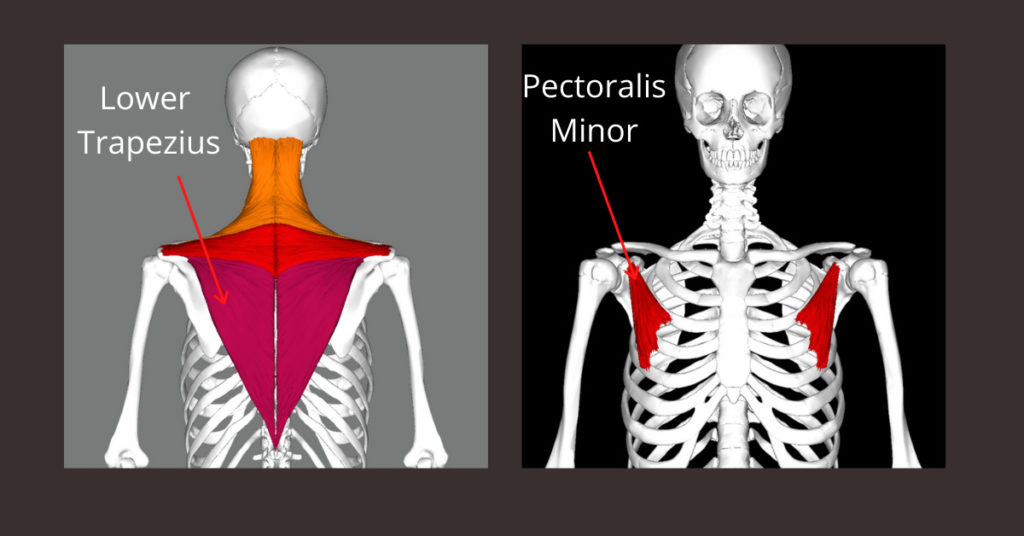Pectoralis Minor and Lower Trapezius: One Minute Anatomy
The video above is about the relationship between pectoralis minor and the lower trapezius.
These two muscles, along with others, are supposed to work together to balance out the movement of the shoulder blade on the back of the body.
For example, imagine setting up in a straight-armed plank and then lowering to the floor with the trunk, pelvis, and head holding steady for the whole journey.
This movement, where there is no deviation from the solidity we created in plank as we lower down to the floor, indicates the excellent balance in the actions of the pectoralis minor and lower trapezius.
As the body lowers down to the floor from plank, the shoulder blades are ideally held in place by a series of muscles including pectoralis minor and the lower trapezius.
If the shoulder blades are held in place the body can lower down with an open chest and the hips and chest can come in for a landing at the same time.
Poor balance in these two muscles leads to a tight pectoralis minor pulling the head of the arm bone forward and down.
When we start to lower down the lower trapezius should engage to limit the pectoralis minor’s ability to drop the head of the arm bone and shoulder forward and down.
But all too often the lower trapezius fails to do its job and the head of the arm bone turns down.
Those two muscles working together can create a balanced action that allows your trunk and shoulder girdle to interact most efficiently.
The reason pectoralis minor is so habitually tight has to do with poor posture and compensating for an overly round upper back.
This gets a little complex but people tend to lean back slightly and the head of the arm bone has to round forward a bit to balance that out.
The problem is the lower trapezius are usually not as strong, and not up to the task of balancing the overly tight pectoralis minor.

